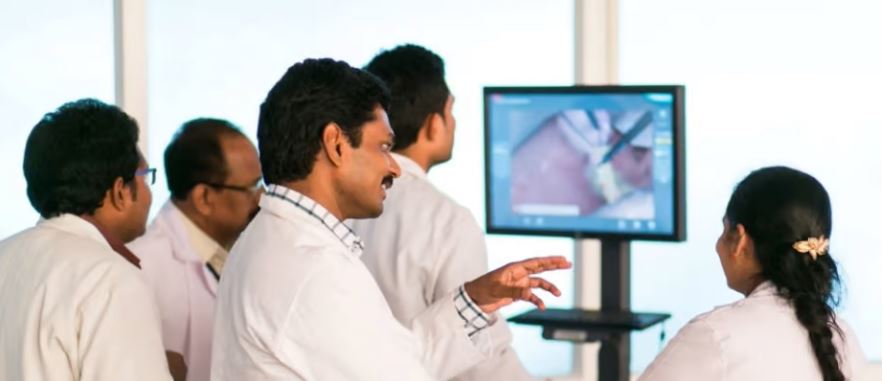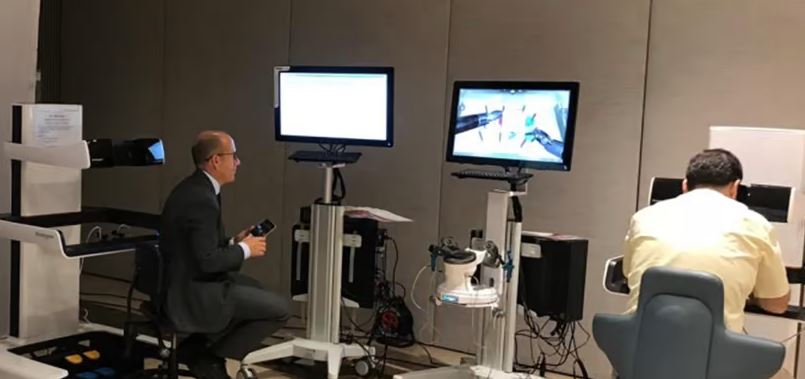适用行业
- 教育
用例
- 虚拟培训
服务
- 系统集成
- 培训
关于客户
半岛犹太社区中心 (PJCC) 是一家非营利组织,决定于 2018 年秋季升级其客户关系管理 (CRM) 系统。CRM 系统基于 Salesforce Lightning 构建,旨在简化其运营并为其客人提供更便捷的服务。更个性化的体验。该组织有 200 多名员工需要接受新系统培训。该培训由 PJCC 的 Salesforce 支持专家 Ryan 领导,他决心让培训对所有员工都有吸引力且有效。
挑战
2018 年秋季,半岛犹太社区中心 (PJCC) 决定升级其基于 Salesforce Lightning 的客户关系管理 (CRM) 系统,以简化运营并为客人提供更加个性化的体验。面临的挑战是培训 200 多名员工如何有效使用新的 CRM 系统。 Salesforce 支持专家 Ryan 负责这一职责。他决心避免传统的培训方法,因为这种方法可能会让员工感到厌烦并影响他们的学习过程。面临的挑战不仅是让员工熟悉新系统,还要确保他们在新系统上线后就做好有效使用它的准备。
解决方案
Ryan 选择使用 ScreenSteps 来创建引人入胜且有效的培训材料。他与 ScreenSteps 教练、转型服务总监 Jonathan DeVore 合作了几个月,开发了培训课程。第一步是在 ScreenSteps 中记录 PJCC 的所有程序,为使用新系统创建单一事实来源。该文档包括操作方法文章、清单和策略。随着新系统的发展,流程和程序发生了变化,ScreenSteps 可以轻松更新文档并保持其准确性。 Ryan 还针对 PJCC 员工必须执行的工作创建了基于角色的培训课程。他专注于创建基于场景的练习,这些练习针对具体工作且相关,使员工能够快速掌握新流程。在培训期间,Ryan 演示了如何在执行过程时参考 ScreenSteps 文章,使用 ScreenSteps 浏览器扩展向员工展示如何使用上下文帮助。
运营影响
数量效益

Case Study missing?
Start adding your own!
Register with your work email and create a new case study profile for your business.
相关案例.

Case Study
Revolutionizing Medical Training in India: GSL Smart Lab and the LAP Mentor
The GSL SMART Lab, a collective effort of the GSL College of Medicine and the GSL College of Nursing and Health Science, was facing a challenge in providing superior training to healthcare professionals. As clinical medicine was becoming more focused on patient safety and quality of care, the need for medical simulation to bridge the educational gap between the classroom and the clinical environment was becoming increasingly apparent. Dr. Sandeep Ganni, the director of the GSL SMART Lab, envisioned a world-class surgical and medical training center where physicians and healthcare professionals could learn skills through simulation training. He was looking for different simulators for different specialties to provide both basic and advanced simulation training. For laparoscopic surgery, he was interested in a high fidelity simulator that could provide basic surgical and suturing skills training for international accreditation as well as specific hands-on training in complex laparoscopic procedures for practicing physicians in India.

Case Study
IoT platform Enables Safety Solutions for U.S. School Districts
Designed to alert drivers when schoolchildren are present, especially in low-visibility conditions, school-zone flasher signals are typically updated manually at each school. The switching is based on the school calendar and manually changed when an unexpected early dismissal occurs, as in the case of a weather-event altering the normal schedule. The process to reprogram the flashers requires a significant effort by school district personnel to implement due to the large number of warning flashers installed across an entire school district.

Case Study
Implementing Robotic Surgery Training Simulator for Enhanced Surgical Proficiency
Fundacio Puigvert, a leading European medical center specializing in Urology, Nephrology, and Andrology, faced a significant challenge in training its surgical residents. The institution recognized the need for a more standardized and comprehensive training curriculum, particularly in the area of robotic surgery. The challenge was underscored by two independent studies showing that less than 5% of residents in Italian and German residency programs could perform major or complex procedures by the end of their residency. The institution sought to establish a virtual reality simulation lab that would include endourological, laparoscopic, and robotic platforms. However, they needed a simulator that could replicate both the hardware and software of the robotic Da Vinci console used in the operating room, without being connected to the actual physical console. They also required a system that could provide both basic and advanced simulation training, and a metrics system to assess the proficiency of the trainees before they performed surgical procedures in the operating theater.

Case Study
Edinburgh Napier University streamlines long-distance learning with Cisco WebEX
• Geographically dispersed campus made in-person meetings costly and inconvenient.• Distance-learning programs in Malaysia, India, and China required dependable, user-friendly online tools to maximize interaction in collaborative workspaces.• Virtual learning environment required a separate sign-in process, resulting in a significant administrative burden for IT staff and limited adoption of collaboration technology.

Case Study
8x increased productivity with VKS
Before VKS, a teacher would spend a lot of time showing a group of 22 students how to build a set of stairs within a semester of 120 hours. Along with not leaving the teacher much time to provide one-on-one support for each student to properly learn carpentry, it also left a considerable amount of room for error. Key information would be misinterpreted or lost as the class was taught in the typical show-and-tell way.

Case Study
Scalable IoT Empowering GreenFlex's Sustainable Growth
GreenFlex, a company that supports sustainable development, decarbonization, and energy efficiency, faced several challenges in its quest to expand its business. The company needed to deploy a robust and sustainable IoT technology to support its growth. It was crucial for them to monitor and control devices at customer sites in a safe and reliable manner. They also needed to integrate devices across a range of communication protocols and gather and act on data to meet efficiency targets. GreenFlex had previously built IoT capabilities into its digital platform, GreenFlexIQ, to monitor and manage customer sites remotely. However, they soon realized that they needed a new platform to support their ambitions. They needed a platform that could scale to connect more devices for production management and make it easier for the operations team to manage devices in the field.







